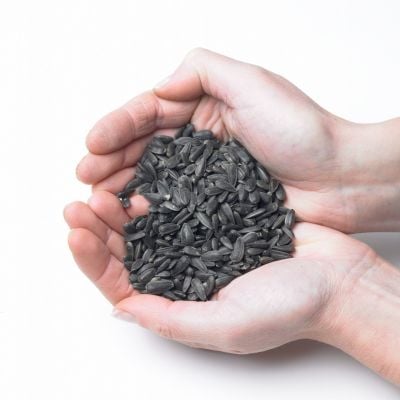Marsh Tit Factfile
Despite its name, the Marsh Tit is not a bird of marshland but of mature broadleaf woodland, in particular oak, plus more rarely they also occur in gardens, parks and copses – provided there is plenty of relatively dense understory to mature trees. The species is very hard to identify against the almost identical Willow Tit, with both having a black cap (though the Marsh Tit’s is more glossy), white facial cheeks and pale brown underside of the body. The best way to tell them apart is by their very different calls, with the Marsh Tit’s a clean and clear ‘pitchou’ sound, and the Willow Tit’s a rather thin ‘zi-zurr-zurr-zurr’. The Marsh Tit has suffered a population crash in the UK and is now on the red list, though, locally, may still be a common sight in some gardens and will readily come onto feeders.
Marsh Tit nesting and breeding habits
The nest site is usually a hole in a tree, though this is often further excavated by the female bird. Nest boxes will also be taken if the habitat around them is suitable. The nest is a cup of moss, fine plant materials and lined with hair and feathers, and is built by the female who also incubates the eggs alone. There are normally between seven and nine eggs.
Marsh Tit history and population trends
The population has seen a significant and constant decline over many decades, with this trend still continuing. One reason cited for the decline is the loss of suitable dense understory habitat in mature woodland, with this loss resulting from an increase in the number of browsing deer.
Behaviour traits of Marsh Tits
Like the Coal Tit, Marsh Tits will cache seeds so they can be eaten when food is scarcer in harsh winter months. This behaviour (if you’re fortunate to be in an area where this rare bird occurs) can be seen in gardens if black sunflower seeds or sunflower hearts are put out, where a bird will repeatedly return to a feeder, take a seed each time, then cache them in different locations.
Marsh Tit diet and food
The primary food is small insects, though seeds are also eaten and especially in the winter months. Although Marsh Tits are not a common sight at garden feeding stations overall, locally they can be. Where this is the case, black sunflower seeds and sunflower hearts appear to be a favourite food.
What should I feed Marsh Tits?
We recommend the following products to help the possibility of attracting Marsh Tits to your garden.
Frequently Asked Questions
What is the difference between a Marsh tit and a Willow tit?
Marsh tit and Willow tit are very difficult to tell apart, with the two species sharing near-identical plumage. However, there are some subtle differences - the glossy black cap of the Marsh tit, with the Willow tit’s cap being duller. The Willow tit also has a slightly pale patch on its wings which the Marsh tit lacks.
Should you feed a Marsh tit in the garden?
Yes, it's beneficial to feed Marsh tits in gardens, as the species is in sharp decline and needs all the help it can get. Black sunflower seeds and sunflower hearts are foods they really seem to go for.
When are Marsh tits most active?
Like all songbirds, Marsh tits are most active first thing in the morning, though in the winter months are likely to stay active throughout daylight hours in order that they can get enough food.
Where did Marsh tits originate from?
As with all species of bird, Marsh tits have evolved over millions of years to become a distinct species, and this to exploit a particular natural habitat and the ecosystem and therefore food it provides. In the case of the Marsh tit, this habitat is damp, mature deciduous woodland – which, in the British Isles, has largely been decimated over millennia and hence this is one of the reasons for the Marsh tit’s decline.
How can you tell the difference between a male and female Marsh tit?
Visually you can’t, as male and female Marsh tits are near identical.






